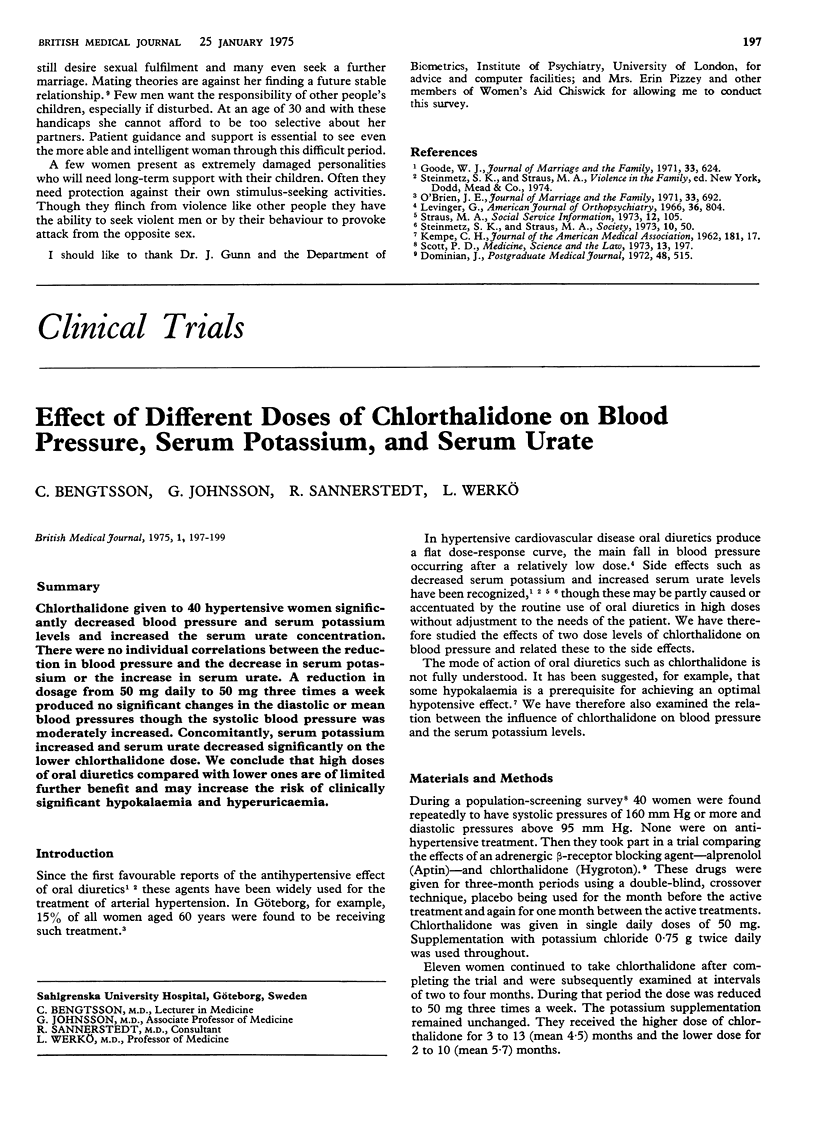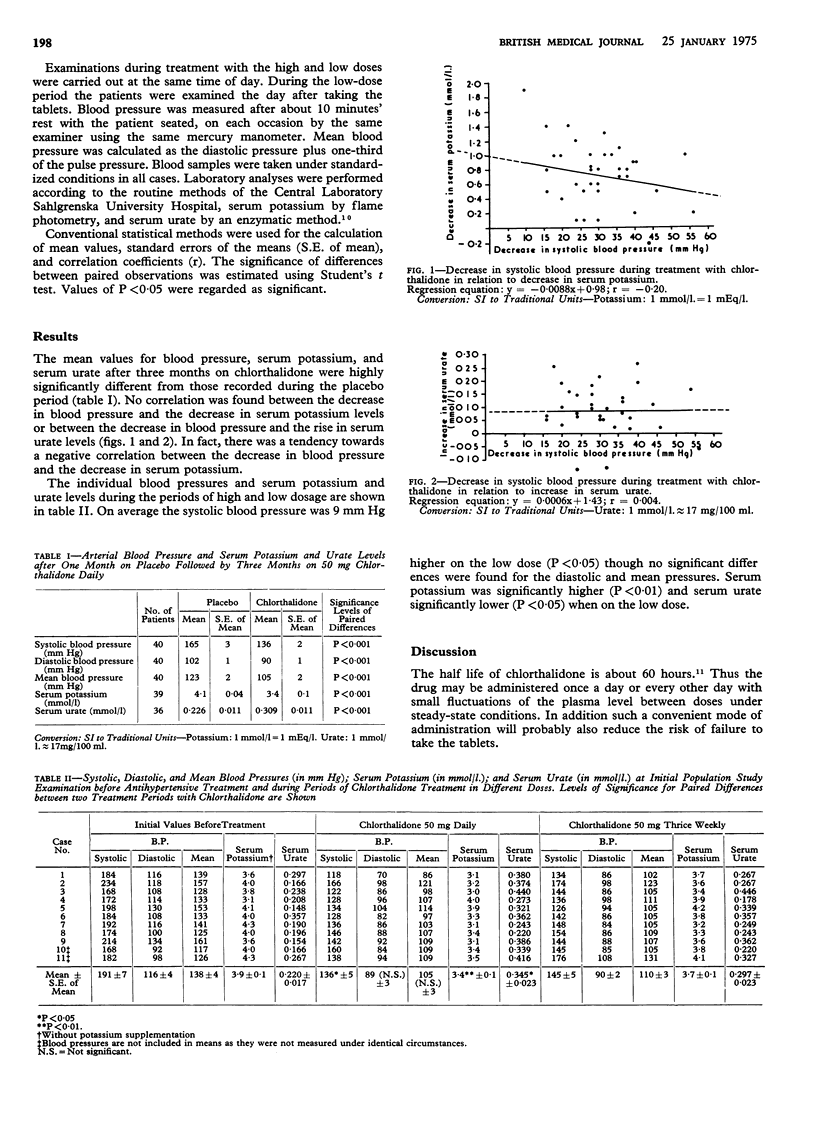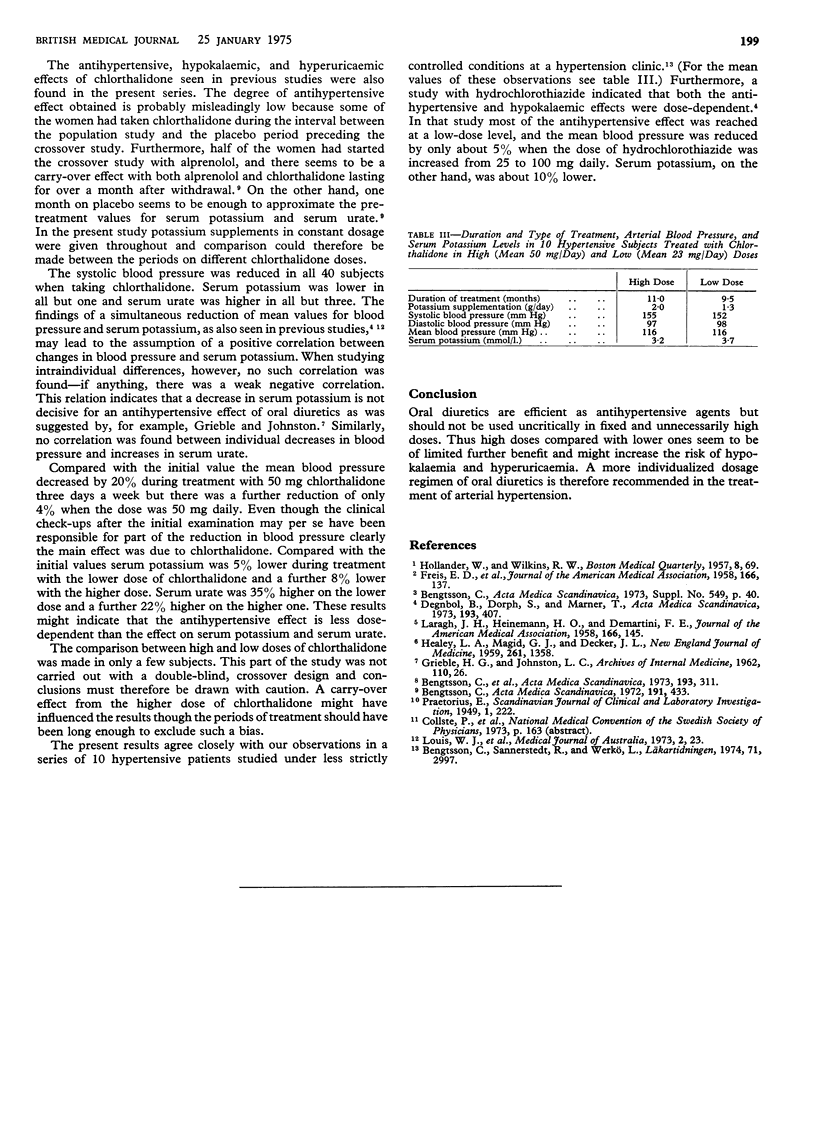Abstract
Chlorthalidone given to 40 hypertensive women significantly decreased blood pressure and serum potassium levels and increased the serum urate concentration. There were no individual correlations between the reduction in blood pressure and the decrease in serum potassium or the increase in serum urate. A reduction in dosage from 50 mg daily to 50 mg three times a week produced no significant changes in the diastolic or mean blood pressures though the systolic blood pressure was moderately increased. Concomitantly, serum potassium increased and serum urate decreased significantly on the lower chlorthalidone dose. We conclude that high doses of oral diuretics compared with lower ones are of limited further benefit and may increase the risk of clinically significant hypokalaemia and hyperuricaemia.
Full text
PDF


Selected References
These references are in PubMed. This may not be the complete list of references from this article.
- Bengtsson C., Blohmé G., Hallberg L., Hällström T., Isaksson B., Korsan-Bengtsen K., Rybo G., Tibblin E., Tibblin G., Westerberg H. The study of women in Gothenburg 1968-1969--a population study. General design, purpose and sampling results. Acta Med Scand. 1973 Apr;193(4):311–318. doi: 10.1111/j.0954-6820.1973.tb10583.x. [DOI] [PubMed] [Google Scholar]
- Bengtsson C. Comparison between alprenolol and chlorthalidone as antihypertensive agents. Acta Med Scand. 1972 May;191(5):433–439. [PubMed] [Google Scholar]
- Bengtsson C., Sannerstedt R., Werkö L. Saluretika i dagens hypertensionsbehandling. Lakartidningen. 1974 Aug 14;71(33):2997–3001. [PubMed] [Google Scholar]
- Degnbol B., Dorph S., Marner T. The effect of different diuretics on elevated blood pressure and serum potassium. Acta Med Scand. 1973 May;193(5):407–410. doi: 10.1111/j.0954-6820.1973.tb10601.x. [DOI] [PubMed] [Google Scholar]
- FREIS E. D., WANKO A., WILSON I. M., PARRISH A. E. Treatment of essential hypertension with chlorothiazide (diuril); its use alone and combined with other antihypertensive agents. J Am Med Assoc. 1958 Jan 11;166(2):137–140. doi: 10.1001/jama.1958.02990020025004. [DOI] [PubMed] [Google Scholar]
- GRIEBLE H. G., JOHNSTON L. C. Treatment of arterial hypertensive disease with diuretics. I. Effects on blood pressure of bendroflumethiazide, potassium chloride, and spironolactone. Arch Intern Med. 1962 Jul;110:26–33. doi: 10.1001/archinte.1962.03620190028004. [DOI] [PubMed] [Google Scholar]
- HEALEY L. A., MAGID G. J., DECKER J. L. Uric acid retention due to hydrochlorothiazide. N Engl J Med. 1959 Dec 31;261:1358–1362. doi: 10.1056/NEJM195912312612702. [DOI] [PubMed] [Google Scholar]
- HOLLANDER W., WILKINS R. W. Chlorothiazide: a new type of drug for the treatment of arterial hypertension. BMQ. 1957 Sep;8(3):69–75. [PubMed] [Google Scholar]
- LARAGH J. H., HEINEMANN H. O., DEMARTINI F. E. Effect of chlorothiazide on electrolyte transport in man; its use in the treatment of edema of congestive heart failure, nephrosis, and cirrhosis. J Am Med Assoc. 1958 Jan 11;166(2):145–152. doi: 10.1001/jama.1958.02990020033006. [DOI] [PubMed] [Google Scholar]
- Louis W. J., Doyle A. E., Dawborn J. K., Johnston C. I. A comparison of chlorothiazide, chlorthalidone and cyclopenthiazide in the treatment of hypertension. Med J Aust. 1973 Jul 7;2(1):23–25. doi: 10.5694/j.1326-5377.1973.tb128609.x. [DOI] [PubMed] [Google Scholar]


